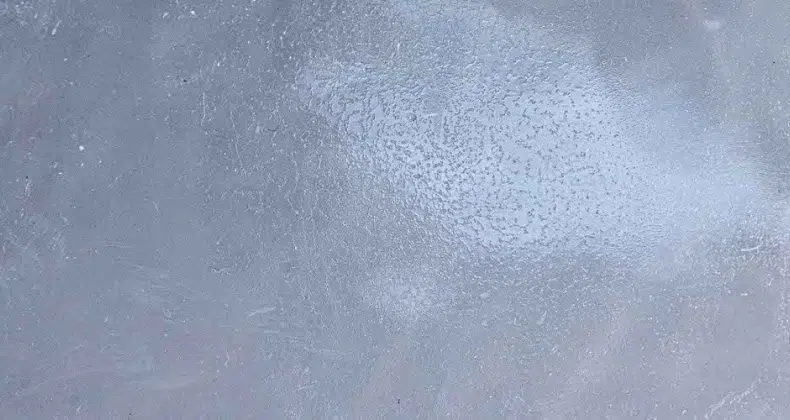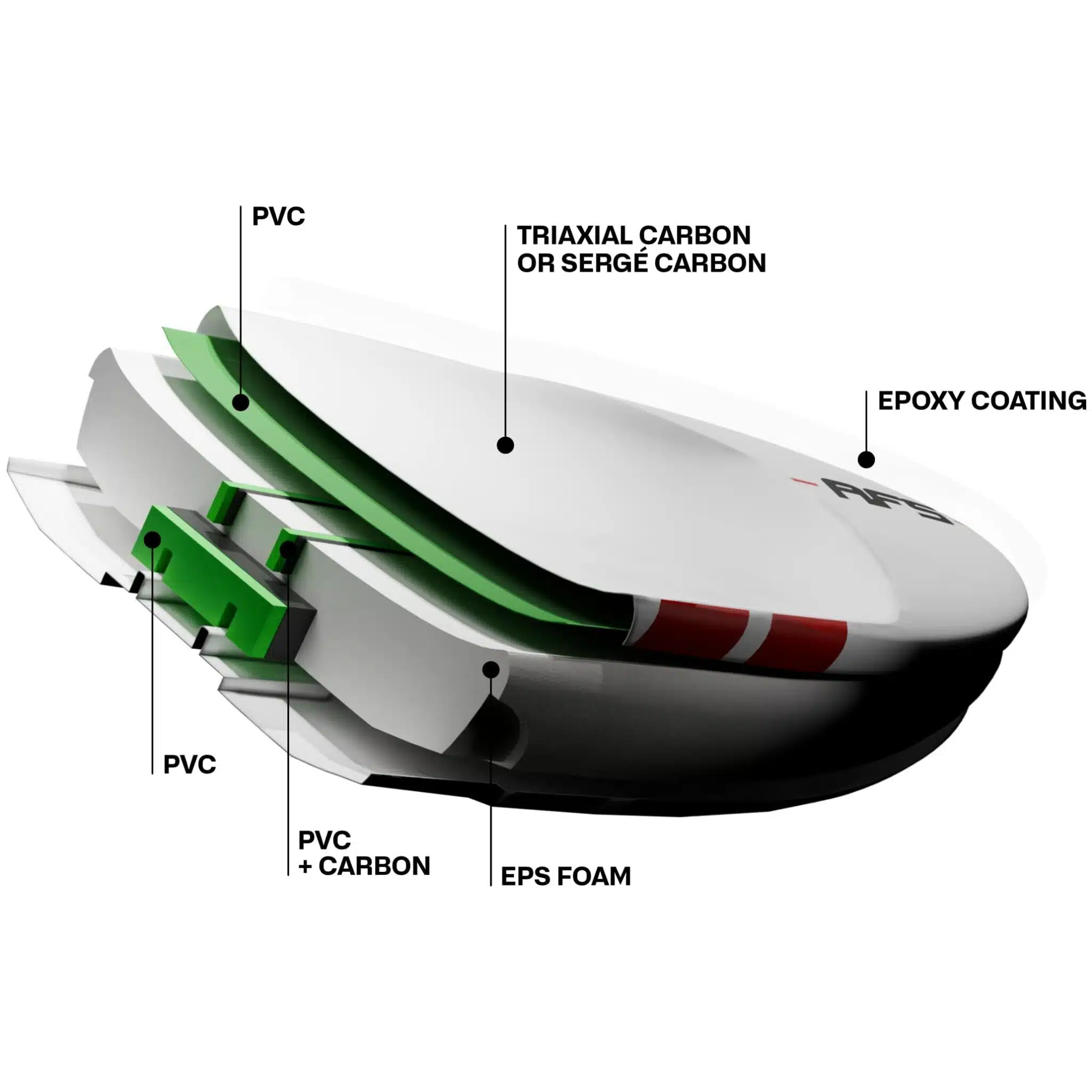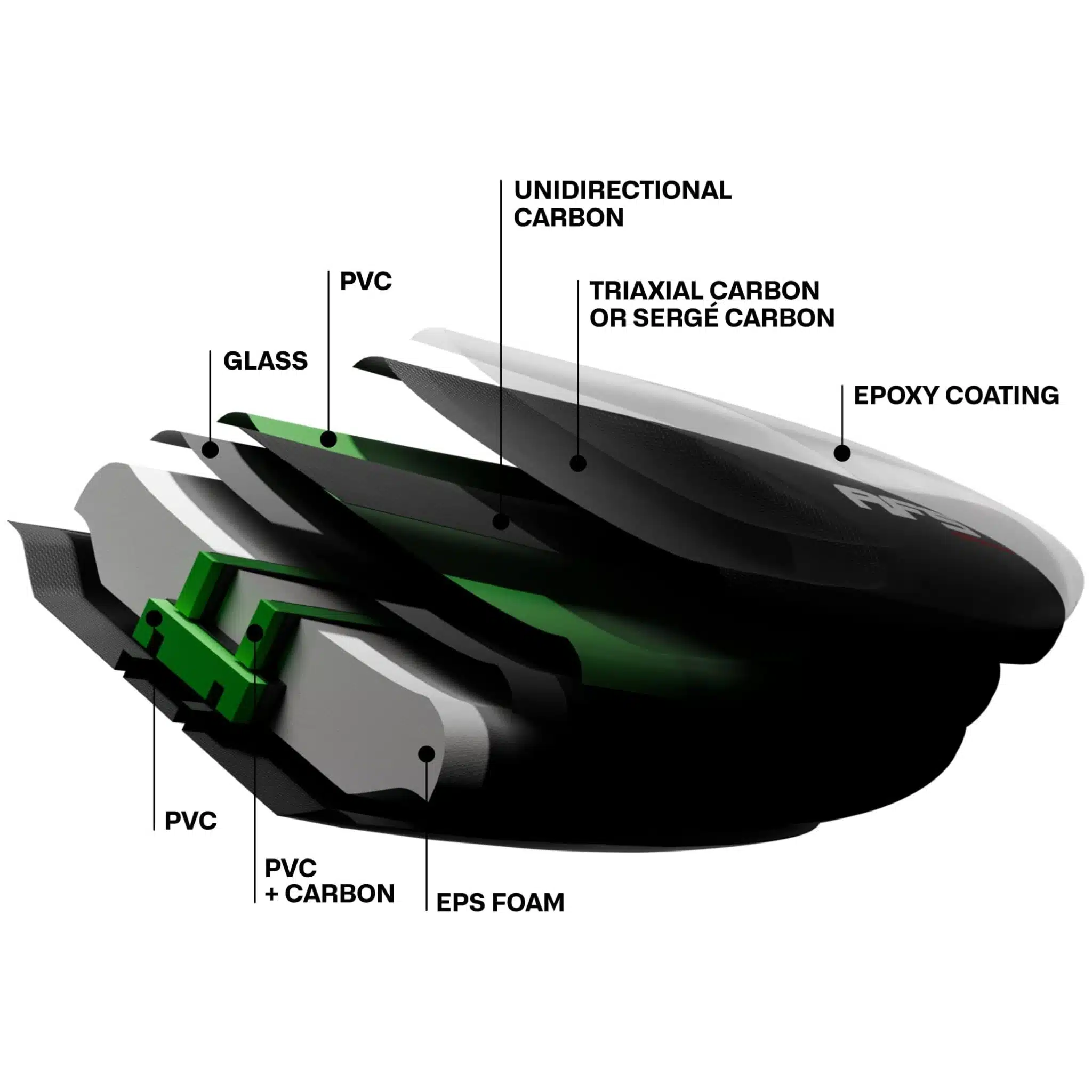Triaxial Carbon is a weave of carbon fiber along three different axes, offering exceptional resistance and rigidity for minimal weight. In this type of construction, we choose to use a denser EPS core than usual. To ensure a light, strong, and rigid board, a Carbon/PVC sandwich reinforcement is located in the deck’s foot zones and around the US rail boxes. Additionally, carbon stiffeners along the board provide more responsiveness. These technical elements combined form a compromise that maximizes the lightness, resistance, and rigidity of our boards.
The manufacture of a board in Triaxial Carbon is a complex and meticulous process that requires artisanal know-how and advanced technologies, which is why this manufacturing technology is implemented in the same facilities where we make the foils in France.







